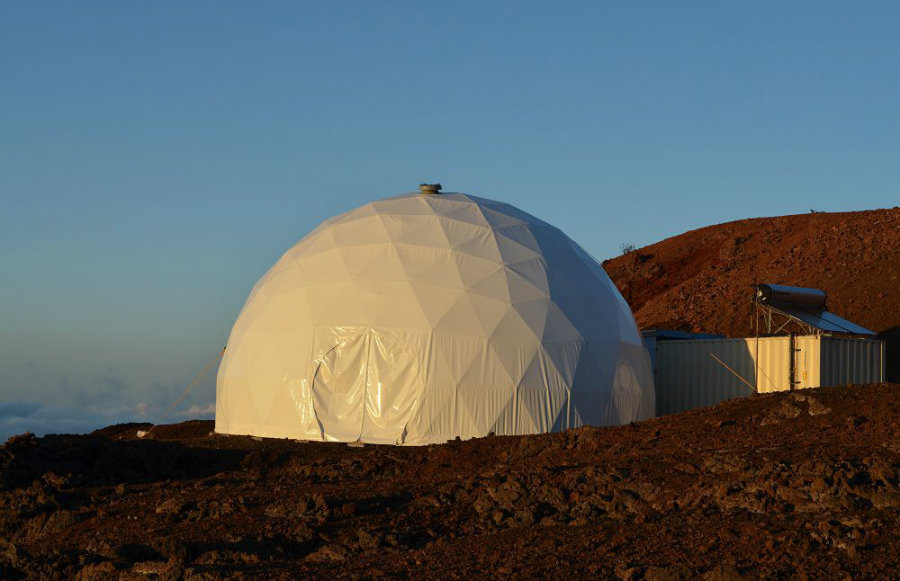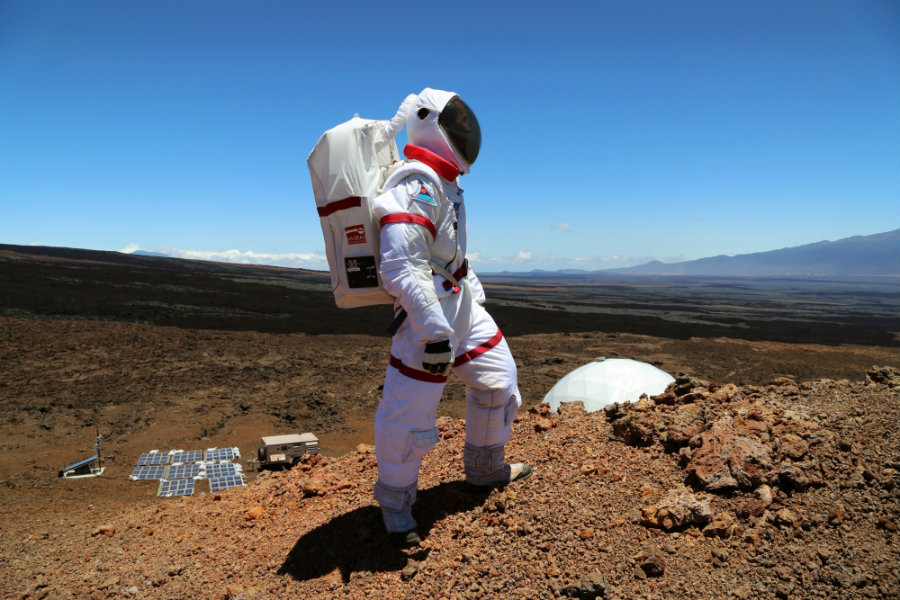Six NASA scientists finally ended on Sunday an eight-month period of isolation inside a massive dome in a Hawaiian volcano zone. They decided to be isolated since this January to simulate an environment that men might witness in the first Martian arrival.
The crew only ate fresh-picked tropical fruits – like pineapple, papaya, mango – and fluffy egg strata after they finished their supplements, which were mostly freeze-dried food, and some other vegetables that the mission biology specialist, Joshua Ehrlich, was able to grow.

The four men and two women submitted for such an extended period of isolation, at that kind of habitat, to better understand how similar space missions – with longer periods of time – would psychologically affect the astronauts. This will provide experts with data to create a crew composed of individuals able to suffer from stress, isolation, and danger in a two-to-three year trip to Mars – which NASA already estimates to be around the year 2030.
“There are certainly human factors to be figured out, that’s part of what HI-SEAS is for,” said the team’s information technology specialist, Laura Larkin, a video message recorded within the dome. “But I think that overcoming those challenges is just a matter of effort… We are absolutely capable of it.”
The isolation also led them to reduce their communication with the outside world. They could only send and receive information with a 20-days delay, which is the time that all communications take to reach the Earth when is sent from Mars.
The NASA group located its camp for eight months on a vast plain below the summit of the Big Island’s Mauna Loa, the world’s largest active volcano.
“It’s really gratifying to know that the knowledge gained here from our mission and the other missions that HI-SEAS has done will contribute to the future exploration of Mars and the future exploration of Space in general,” science officer Samuel Paylor said on Sunday.
Impressive technology to determine the astronauts’ humor
The NASA team wore a very advanced suit that let the base-scientists study when the astronauts were in a good or bad mood. The suit’s sensors let them gauge their emotions and proximity to others in the small, 1,200 square-foot (111-square meter) dome where they lived.
They used games to measure the compatibility between two astronauts and the stress levels they would reach when they started to feel uncomfortable or angry. When this happened, they just had to activate a system of virtual reality that let them escape to tropical beaches or other familiar landscapes.

“We’ve learned, for one thing, that conflict, even in the best of teams, is going to arise,” said the project’s lead investigator, University of Hawaii professor Kim Binsted. “So what’s really important is to have a crew that, both as individuals and a group, is really resilient, is able to look at that conflict and come back from it,” Daily Mail reported.
Although there are other Mars simulations around the world, this NASA crew thinks it is the most accurate to study due to the Hawaiian environment with volcanic rocks, red plain below the summit of Mauna Loa, that’s so similar to Mars’ landscapes.
Source: Daily Mail
